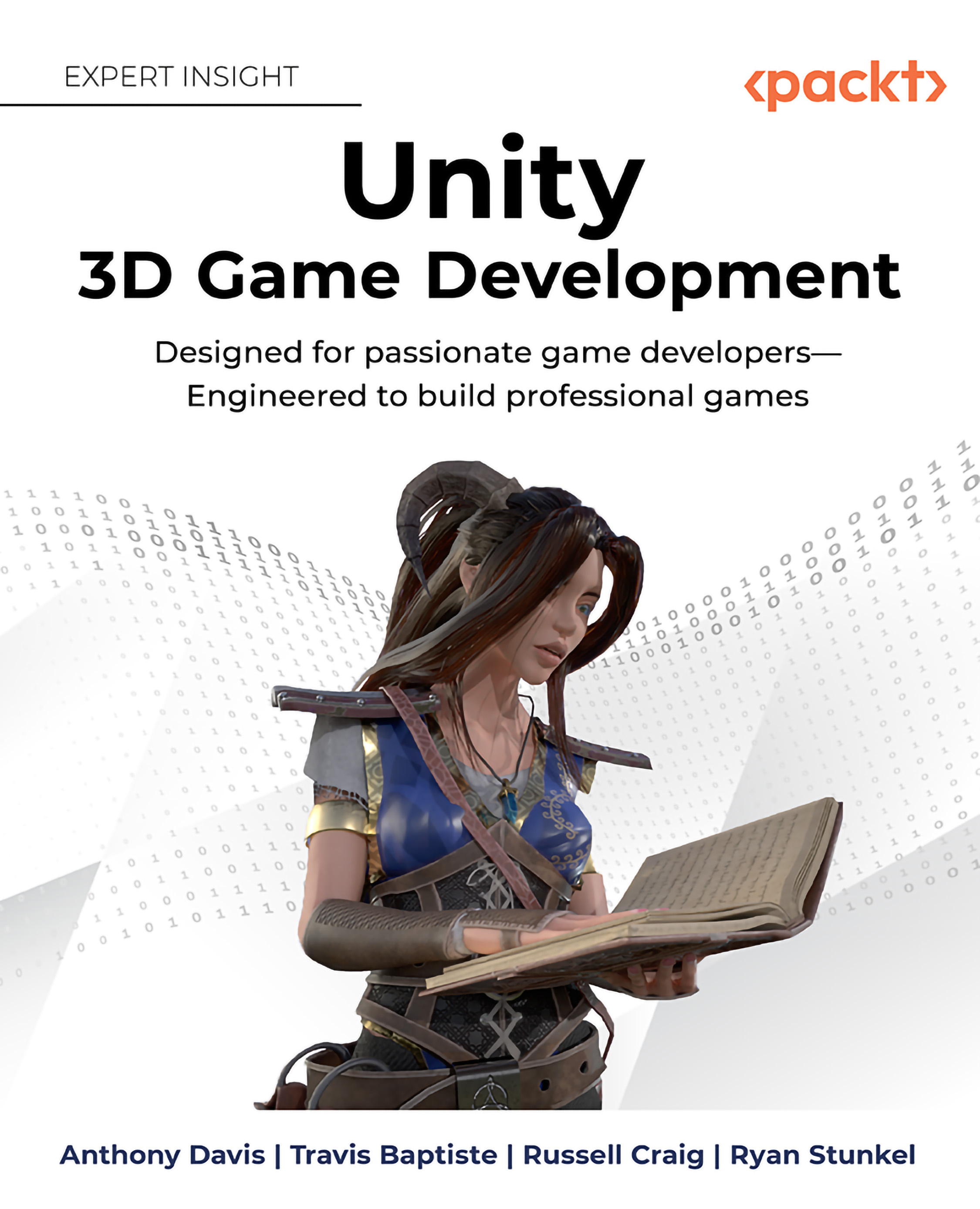Overview of this book
This book, written by a team of experts at Unity Technologies, follows an informal, demystifying approach to the world of game development.
Within Unity 3D Game Development, you will learn to:
Design and build 3D characters and game environments
Think about the users’ interactions with your game
Develop an interface and apply visual effects to add an emotional connection to your world
Gain a solid foundation of sound design, animations, and lighting
Build, test, and add final touches
The book contains expert insights that you’ll read before you look into the project on GitHub to understand all the underpinnings. This way, you get to see the end result, and you’re allowed to be creative and give your own thoughts to design, as well as work through the process with the new tools we introduce.
Join the book community on Discord to read this book with Unity game developers, and the team of authors. Ask questions, build teams, chat with the authors, participate in events and much more. The link to join is included in the book.



 Free Chapter
Free Chapter
